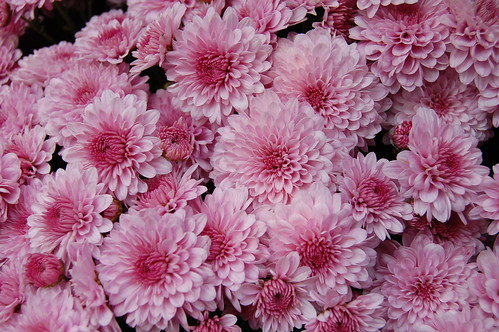Tip of the Week: Dividing Perennials
Posted in Gardening Tips on October 13 2009, by Sonia Uyterhoeven
 |
Sonia Uyterhoeven is Gardener for Public Education. Join her each weekend for home gardening demonstrations on a variety of topics in the Home Gardening Center. |
 As long as you don’t over do it, gardening is good for your body and your mind. These are the famous last words of every gardener on staff at NYBG as we sit around and nurse our strains, bumps, and bruises.
As long as you don’t over do it, gardening is good for your body and your mind. These are the famous last words of every gardener on staff at NYBG as we sit around and nurse our strains, bumps, and bruises.
Taking a positive spin, there are days when it is wonderful to settle in to a labor-intensive task. The blood flows and pent up aggressions or misgivings are quickly washed away.
Dividing perennials is one of these physically invigorating and rewarding tasks. You start with one overgrown monster of a plant and end up with a nice collection of reasonably sized specimens that can be transplanted throughout the garden or gifted to green-thumbed friends.
Perennials can be divided either in early spring and summer or in the fall. The rule of thumb is that it is best to divide spring and early summer flowering perennials in the fall and late-season bloomers in the spring. Perennials that flower very early in the season can also be divided immediately following flowering.
Why divide perennials? There are several reasons. One is to manage the size of the plant: Rapidly spreading perennials can be kept in control by dividing them annually. The bee balm (Monarda) in the Sensory Garden loves to grow. It is in the mint family and expands rapidly every year from underground stolons. It is also susceptible to powdery mildew late in the season. By dividing the bee balm annually in the spring, not only do I manage its size, but I increase the plant’s vigor, because the division has proven to increase its resistance to the fungal malady of powdery mildew.
Division also allows a plant more space to grow and encourages vigorous young shoots. It’s like a good spa treatment for tired perennials—culling out the old growth and leaving room for the new. In the instance of bee balm, the result is a desirable trifecta of control, rejuvenation, and vigor/disease resistance.
It is always best to divide your plants on an overcast day rather than a sunny day (same rule for planting). Before dividing perennials in the fall, cut them back to about 6 or 8 inches. This will make it much easier to see what you are doing and will cut down on the plant’s moisture loss when replanted.
When digging up your perennials, leave ample space for a good-sized root ball. If you are dividing a large mum (Chrysanthemum) that has happily spread all over the place, it might be easier to lift it in pieces. Cut it up as you would pieces of a pie.
Some perennials can simply be split apart with your hands; others need to be rested on their side (so as not to damage the crown or the top of the perennial) and sliced down the middle with a spade. Tough ones should be pried apart with the double fork method: Place two spading forks back to back in the center of the perennial with the tines intersecting and pull them back and forth in a scissor motion. Clean out any dead material and replant the divisions.

